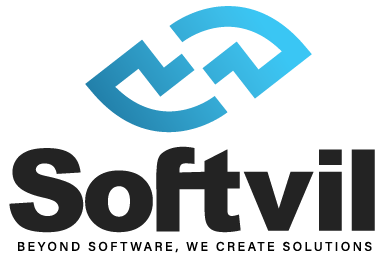Introduction
In today’s digital business landscape, software development is crucial for success. To keep pace with rapidly evolving technologies and meet the demand for specialized expertise, companies are turning to software outsourcing solutions. This strategy involves delegating software development tasks to third-party providers, often in different regions. It encompasses coding, testing, and project management.
As technology’s influence continues to grow, scaling up businesses through innovative software solutions is essential. However, this endeavor can be challenging due to the need for specialized skills not always available in-house. Software development outsourcing becomes a vital solution in this context.
In this article, we explore the world of software outsourcing, highlighting its benefits, challenges, and best practices. We’ll see how it grants access to specialized skills, enhances flexibility, speeds up time-to-market, allows businesses to focus on core activities, and reduces costs. All of these elements contribute to successful business growth in the digital age.
What is Software Development Outsourcing?
Software Development Outsourcing: A Strategic Overview

Software development outsourcing is a strategic business practice that involves partnering with external service providers, often located in different geographical regions, to delegate critical software development tasks and responsibilities. This collaborative approach empowers organizations to harness external expertise, specialized skills, and resources to meet their software-related objectives efficiently.
Scope of Tasks Typically Outsourced:
The scope of tasks typically outsourced in software development spans a wide spectrum of responsibilities, each contributing to the successful creation, deployment, and maintenance of software solutions. These tasks include:
Coding: This involves writing the actual software code, transforming conceptual ideas and requirements into functional software applications. Skilled coders are responsible for ensuring the software’s functionality, performance, and security.
Testing: Rigorous testing is integral to software development to identify and rectify bugs, glitches, and vulnerabilities. Testing encompasses various phases, from unit testing to system and acceptance testing.
Project Management: Effective project management is vital for overseeing the software development process, including defining project goals, allocating resources, setting timelines, and ensuring adherence to budgets and quality standards.
Design: User experience (UX) and user interface (UI) design are crucial components of software development. Outsourced design teams focus on creating intuitive, visually appealing interfaces that enhance user satisfaction.
Maintenance and Support: Beyond initial development, software requires ongoing maintenance and support. Outsourcing providers often offer post-launch services, such as updates, troubleshooting, and performance optimization.
By outsourcing these responsibilities, organizations can tap into a broader talent pool, access specialized skills, and adapt to evolving technology trends while concentrating on their core competencies. The symbiotic relationship between companies and software outsourcing providers fosters innovation, accelerates product development, and enables businesses to remain competitive in the dynamic digital landscape.
Benefits of Software Development Outsourcing

In the realm of software development, outsourcing has emerged as a transformative strategy, bestowing upon businesses a myriad of advantages. These benefits span a spectrum of critical areas, propelling companies toward growth and innovation. Let’s explore these advantages in detail.
Access to Specialized Skills & Expertise
Outsourcing to software outsourcing companies opens the gateway to an extensive talent pool brimming with specialized skills and unparalleled expertise. Such partners encompass a wide range of technical prowess, including software engineering, artificial intelligence, data analytics, user experience design, and more.
Take, for example, a healthcare startup seeking to develop a cutting-edge telemedicine platform. It can readily tap into the expertise of software developers with a deep understanding of healthcare regulations and patient data security, ensuring compliance and quality. These outsourcing partners, seasoned in catering to diverse clients and industries, bring a treasure trove of best practices and innovative solutions, positioning businesses on the leading edge of technological advancements.
Take, for example, a healthcare startup seeking to develop a cutting-edge telemedicine platform. It can readily tap into the expertise of software developers with a deep understanding of healthcare regulations and patient data security, ensuring compliance and quality. These outsourcing partners, seasoned in catering to diverse clients and industries, bring a treasure trove of best practices and innovative solutions, positioning businesses on the leading edge of technological advancements.
Scalability & Flexibility
The scalability and flexibility afforded by software development outsourcing are invaluable assets for businesses, especially those subject to ever-changing market conditions and demand fluctuations. Outsourcing allows enterprises to swiftly adjust the size and composition of their software development teams without the complexities of hiring or downsizing in-house staff.
Consider an e-commerce company gearing up for a holiday shopping rush. It can seamlessly expand its software development workforce with the help of outsourcing partners, ensuring the timely launch of new features and enhanced website performance. Subsequently, when the holiday season wanes, these additional resources can be gracefully scaled down, avoiding the cost burden of maintaining a bloated in-house team.
Faster Time to Market
The exigency of delivering products and services promptly in today’s fiercely competitive business landscape cannot be overstated. Outsourcing streamlines the software development process, expediting time-to-market. By harnessing the expertise and efficiency of outsourcing partners, businesses can significantly reduce the time it takes to conceptualize, develop, and launch new products and services.
Take a financial institution aiming to introduce a mobile banking app. It can leverage the specialized skills of software outsourcing companies, cutting down development time and allowing the bank to offer the app to its customers swiftly. This swiftness translates to a competitive advantage, capturing a larger share of the market.
Improved Focus on Core Business Activities
Software development outsourcing liberates businesses from the intricacies of software creation, enabling them to concentrate on their core competencies. By entrusting the entire software development process to proficient partners, organizations can redirect their internal resources toward high-value activities such as product innovation, customer engagement, and strategic expansion.
Consider a global retail giant that delegates the development of its e-commerce platform to software outsourcing companies. This strategic shift yields a sharper competitive edge and greater market responsiveness.
Cost Savings
Cost savings are a compelling motivator for many businesses embarking on software development outsourcing journeys. A survey by Deloitte revealed that over 70% of organizations opt for outsourcing primarily to reduce costs. Outsourcing providers can offer competitive rates, leveraging lower labor costs in their respective countries.
A tech startup can significantly lower its development expenses by partnering with software outsourcing companies based in countries with cost-effective labor markets, while simultaneously sidestepping overhead costs, equipment expenses, and the time and resources required for recruitment and training.
Navigating the Risks and Challenges of Outsourcing Software Development

Software development outsourcing brings a world of opportunities, but it also presents a spectrum of risks and challenges that demand vigilant management. Understanding these challenges and implementing effective strategies to mitigate them is essential for a successful outsourcing partnership.
Communication & Cultural Differences
The first hurdle often encountered in software development outsourcing pertains to communication and cultural disparities. Language barriers, time zone differences, and varying cultural norms can lead to misunderstandings, delays, and misalignment between in-house and outsourced teams.
Mitigating these challenges necessitates a multi-faceted approach. Establishing clear and robust communication channels is paramount. Regular video conferences, documentation of project requirements in detail, and the use of project management tools facilitate effective communication. Furthermore, fostering a spirit of mutual respect for diverse cultures and promoting cultural awareness within teams can enhance collaboration.
Quality Control
Quality control emerges as a significant concern in outsourcing arrangements. When collaborating with an outsourcing partner, ensuring that the final product aligns with your organization’s quality and functionality standards can be challenging.
To establish and maintain quality standards, comprehensive guidelines and benchmarks should be defined from the project’s outset. Continuous testing, quality assurance processes, and frequent evaluations throughout the software development lifecycle are crucial. Periodic audits and peer reviews can further uphold the quality quotient. Open and transparent communication between client and outsourcing partner plays a pivotal role in addressing and rectifying quality control issues.
Data Security
Data security is a paramount concern when entrusting a third party with sensitive information. Protecting proprietary data, customer information, and intellectual property is non-negotiable.
Safeguarding data starts with selecting a software outsourcing company with a robust track record in data security. Partners should adhere to industry standards such as ISO 27001 and be well-versed in encryption, access control, and data handling protocols. A meticulously drafted contract should articulate data security expectations, compliance requirements, and breach response procedures. Regular security audits and proactive monitoring of the outsourcing partner’s security practices ensure that data remains impervious to threats.
Legal & Regulatory Compliance
Navigating the labyrinth of legal and regulatory compliance is imperative, as different regions and industries are subject to diverse laws. For example, the European Union’s General Data Protection Regulation (GDPR) enforces stringent data protection guidelines, while the U.S. mandates regulations like the Health Insurance Portability and Accountability Act (HIPAA) for healthcare data.
Selecting an outsourcing partner well-versed in the legal and regulatory landscape relevant to your industry is crucial. Compliance expertise is non-negotiable. The contract between client and partner should unequivocally delineate compliance obligations and expectations. Regular audits and assessments of the partner’s compliance posture should be integrated into the partnership’s framework to ensure a seamless alignment with regulatory requirements.
Hidden Costs
Beware of hidden costs lurking beneath the surface of outsourcing arrangements. Travel expenses for on-site visits, legal fees for contract review and compliance, and project management costs can accumulate swiftly.
Where to Outsource: Nearshore, Offshore, & Onshore Options

When contemplating software outsourcing, companies must decide on the geographical location of their outsourcing partner. There are three primary categories to consider: nearshore, offshore, and onshore outsourcing.
Nearshore Outsourcing involves collaborating with a software development team in a neighboring country or region, often within a similar time zone or a few hours’ difference. This proximity facilitates smoother communication and allows for easier coordination of activities. For instance, European companies frequently opt for nearshore outsourcing in Eastern European countries.
Offshore Outsourcing entails partnering with a team located in a significantly different time zone and geographical region. This option often offers cost savings due to lower labor expenses. For instance, businesses in Western countries commonly outsource to Asian nations like India, Vietnam, and the Philippines.
Onshore Outsourcing involves working with software developers within the same country as the client. While typically the most expensive option, onshore outsourcing offers advantages such as shared language, cultural affinity, and ease of communication.
When choosing an outsourcing destination, factors such as language barriers, cultural alignment, time zone differences, and the availability of skilled talent should be considered. Popular outsourcing destinations include Eastern European countries like Ukraine and Romania, Latin American countries like Mexico and Brazil, and, perennially, India. Each destination carries its unique advantages, and the choice should align with the project’s specific needs, budget, and communication requirements.
Choosing the Right Engagement Model

Selecting the appropriate outsourcing engagement model is crucial to the success of a software development project. There are several distinct models, each suited to different project types and objectives.
Fixed Price Model
In this model, a predetermined project scope, budget, and timeline are established. It’s well-suited for projects with clearly defined requirements, as clients can anticipate costs and timelines with certainty. For example, a company developing a simple mobile app with well-defined features may opt for a fixed price model.
Time and Material Model
This model is ideal for complex projects where requirements may evolve over time. Clients pay based on the time and resources devoted to the project, offering flexibility to adapt to changing needs. For instance, a project involving cutting-edge technology where requirements may change as the technology develops would benefit from this model.
Dedicated Team Model
This engagement model involves hiring a dedicated team of developers, testers, and project managers to work exclusively on a project. It suits long-term projects requiring close collaboration, such as creating a comprehensive software platform.
Staff Augmentation Model
Companies employ this model to augment their in-house teams with specialized skills for specific tasks or projects. For instance, a business expanding its e-commerce platform might temporarily hire additional software developers with e-commerce expertise.
Build-Operate-Transfer Model
This model involves establishing a dedicated team through an outsourcing provider, with the intention of eventually transferring ownership of the team to the client. It’s suitable for long-term strategic initiatives.
The choice of engagement model should align with the project’s complexity, requirements, and goals. Selecting the right model ensures efficient project execution and cost-effectiveness while mitigating risks associated with changing project dynamics.
Conclusion
Software development outsourcing emerges as a strategic solution, offering access to specialized skills, scalability, faster time-to-market, enhanced focus on core activities, and cost savings. While it presents undeniable benefits, navigating outsourcing’s challenges, from communication hurdles to quality control, data security, legal compliance, and hidden costs, requires a well-structured strategy. Careful consideration of outsourcing destinations, engagement models, and cultural alignment is essential. When done right, software outsourcing empowers businesses to scale up efficiently, driving innovation and competitiveness in the digital era.

